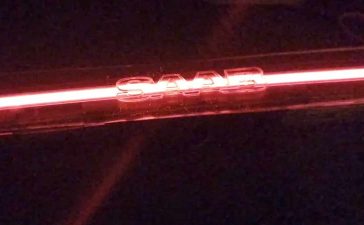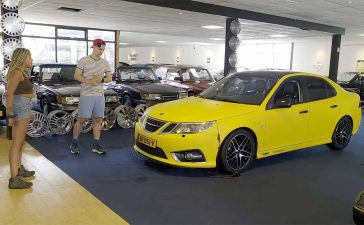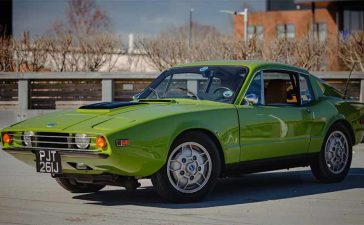A Trade Only a Saab Fan Could Understand
In his latest upload, WatchJRGo set aside his freshly repaired Audi A4 in exchange for something far more unpredictable: a 2006 Saab 9-3 Aero with a turbocharged V6 and six-speed manual gearbox. The catch? The Saab was broken, neglected, and barely roadworthy.
The swap was simple – his Audi, with about $1,600 invested, for a Saab that had been sitting under trees, collecting leaves, and leaking coolant. But for JR, who has long dabbled in unusual and rewarding projects, this wasn’t just a gamble. It was an entry point back into the Saab community, and a chance to explore what makes these Swedish sedans special.
The video, titled “I TRADED My FIXED Audi For A BROKEN SAAB… And I’m Happy About It?”, captures the full walkaround, the first repairs, and the maiden drive. For Saab enthusiasts, it’s a refreshing reminder of the brand’s quirks, strengths, and undeniable charm.
Aero Details That Set It Apart
Unlike base models, the 9-3 Aero always stood as the flagship in Saab’s mid-size lineup. JR’s car features the first-year 2.8-liter turbocharged V6, rated around 250 horsepower from the factory but capable of much more. This particular example arrived with an EFI Live tuning cable in the glovebox and a stainless-steel downpipe waiting to be installed — signs of a previous owner’s performance ambitions.
Visually, the Aero distinction shows through in its aggressive bumpers, side skirts, and rear spoiler. Even in neglected condition, the stance and body lines project purpose. Aftermarket touches such as drilled and slotted rotors, yellow calipers, and repainted wheels add to the mix, though not always executed with factory precision.
For viewers unfamiliar with Saab, JR emphasizes that while the 9-3 shares GM’s Epsilon platform with cars like the Chevy Malibu, its styling and tuning remain uniquely Saab. On the road, that difference becomes immediately clear.
Quirks, Features, and Fighter-Jet Inspiration
Sliding inside the Aero, JR highlights the details that distinguish Saab’s cockpit:
- Night Panel, the feature that dims all instruments except the speedometer.
- The joystick-controlled air vents, beloved by enthusiasts for their tactile satisfaction.
- The iconic flip-out cup holder, more entertaining than functional.
- The center console ignition switch, paired with Saab’s eccentric key.
Despite 177,000 miles, the two-tone leather seats remain in good condition, and the overall design — with its flowing curves, integrated glovebox, and intuitive controls — impresses JR. The car still feels upscale, even compared to newer vehicles.
Not everything worked, of course. The radio and SID display refused to power up, the rear door locks were inconsistent, and an aftermarket subwoofer setup left behind a tangle of wiring. Yet the fundamentals — the climate control, windows, and power seats — soldiered on.
First Wrenching Session
Before hitting the road, JR and his team tackled the Saab’s immediate issues. The disconnected downpipe was bolted back into place, the coolant reservoir reattached, and fluids topped off. Remarkably, once sorted, the car started and idled smoothly.
The process highlighted Saab’s serviceability. Despite the brand’s reputation for complexity, much of the Aero’s hardware is straightforward, especially for seasoned DIYers. With just a few tools and some patience, the Saab transformed from driveway ornament to running project.
For viewers used to JR’s pragmatic approach, it was telling that he chose not to install the aftermarket downpipe or chase higher boost right away. Instead, the focus was on restoring baseline reliability – proof that even in project car culture, restraint has its place.
First Drive Impressions: Magic in Third Gear
Once on the road, JR’s skepticism gave way to genuine enthusiasm. The light clutch and crisp six-speed manual won him over quickly, and the 2.8 V6 turbo pulled hard through the rev range.
“Third gear is a monster,” he remarked, grinning as the Saab surged forward. Compared to the Cobalt SS — another GM product he referenced – the Saab felt more refined, with two extra cylinders delivering smoother, stronger power.
Even with worn suspension and an alignment issue, the chassis felt composed. The lowered stance, whether from factory Aero springs or aftermarket replacements, gave it an assertive character. It wasn’t perfect, but it was enough to remind JR – and his audience – why Saab sedans earned cult status.
Why Saab Still Matters in 2025
What struck JR most during his walkaround was the styling longevity. Despite peeling vinyl on the roof and some sun-faded paint, the clean lines, integrated details, and subtle aggression of the 9-3 Aero remain striking in 2024.
Imported clear-lens European taillights gave his car a distinctive rear profile, while the interior still looked contemporary thanks to Saab’s driver-focused ergonomics. For a brand that ceased production over a decade ago, Saab’s design choices continue to hold their own against modern offerings.
This was no accident. Saab, drawing from its aerospace heritage, always prioritized functional, human-centered design. That philosophy resonates even more today, in an era where many cars feel indistinguishable.
The Bigger Picture: Why the Trade Made Sense
On paper, trading a fixed Audi A4 for a broken, high-mileage Saab seems reckless. But viewed through an enthusiast’s lens, the swap is compelling.
The Audi represented commodity German motoring, with resale value tied to condition and little else. The Saab, however, represents scarcity and personality. Manual V6 Aeros are rare, especially in North America, and they embody a moment when Saab still pushed for performance credibility under GM’s umbrella.
JR didn’t just get a project car. He got a slice of automotive history, and one with a devoted fan base ready to offer advice, parts, and encouragement. For a YouTuber whose channel thrives on projects with stories, that’s worth more than market value.
Saab’s Enduring Pull
What makes this video resonate is how it underscores Saab’s staying power. Even broken examples attract attention, spark curiosity, and inspire restoration. For many viewers, the sight of JR wearing a Saab Heritage Museum T-shirt while unveiling his Aero was symbolic: these cars aren’t just machines, they’re cultural artifacts.
The video also highlights the importance of dedicated suppliers like eSaabParts.com, which keep OEM components available long after most brands would have abandoned support. Without that ecosystem, projects like JR’s Aero would be far harder to sustain.
A Saab worth saving
By the end of the video, the 2006 Saab 9-3 Aero had gone from lifeless to lively. It still needs attention – the audio system, the suspension, the cosmetics — but its soul is intact. With its turbo V6, manual gearbox, and distinctive design, it offers an experience that few cars in its class can match.
For WatchJRGo, the trade was more than fair. For Saab enthusiasts, the video was a reminder that even when broken, Saab cars still have the power to excite, frustrate, and inspire. In a world of increasingly homogenous vehicles, that alone makes them priceless.











